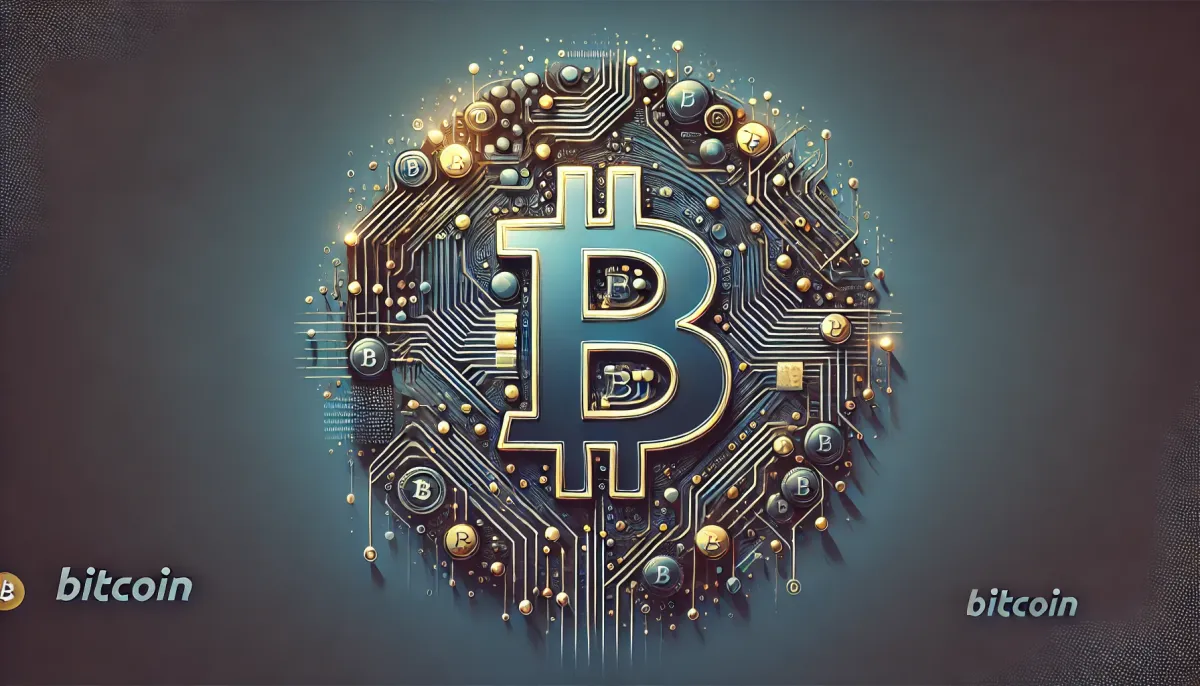Web5: Decentralizing the Internet with Bitcoin Nodes
In the September 10, 2024 What is Money podcast, Polycarp Nakamoto explores the concept of Web5, a decentralized internet built on Bitcoin architecture.

Briefing Notes
My 'briefing notes' summarize the content of podcast episodes; they do not reflect my own views. If you have comments about this briefing note, please leave a comment below (requires signing up for a free blog subscription). Note that some of the podcasts I summarize are likely sponsored episodes: don't trust, verify, if the information you are looking for is to be used for decision-making.
Summary
Web5, a Bitcoin-based internet architecture, aims to decentralize control over data, identity, and financial transactions. By leveraging Bitcoin nodes and mesh networks, Web5 envisions an internet that is resilient, private, and beyond the reach of censorship. This What is Money podcast episode, with Polycarp Nakamoto, explores the technical, economic, and societal implications of Web5, highlighting its potential to redefine digital sovereignty and compete with centralized digital currencies and internet providers.
Take-Home Messages
- Decentralized Internet Architecture: Web5 proposes a new internet model built on Bitcoin nodes and mesh networks, promoting digital sovereignty and resilience against censorship.
- Economic Integration: By facilitating microtransactions through Bitcoin nodes, Web5 creates new economic incentives, driving participation and expanding Bitcoin’s role beyond currency.
- Privacy and Identity Control: Decentralized identifiers (DIDs) and verifiable credentials in Web5 offer users enhanced privacy and control over their digital identities, reducing dependence on centralized services.
- Competing Digital Futures: Web5 presents an alternative to Central Bank Digital Currencies (CBDCs), positioning itself as a decentralized and user-empowered internet solution against state-controlled digital financial systems.
- Overcoming Barriers: The success of Web5 depends on overcoming technological adoption challenges and navigating regulatory landscapes that may resist this decentralized approach.
Overview
Web5 represents the next evolution in internet architecture, fundamentally shifting from centralized control to a decentralized model using Bitcoin nodes and mesh networks. Unlike previous iterations, Web5 is designed to be censorship-resistant, with users owning their data and identities through decentralized identifiers (DIDs) and verifiable credentials. This vision aligns with Bitcoin’s foundational principles of decentralization and individual sovereignty, proposing an internet that cannot be easily controlled or shut down by any single entity.
A core innovation in Web5 is its use of mesh networks, which enable devices to communicate directly without relying on traditional internet service providers. This peer-to-peer communication model enhances the internet’s resilience and security by removing central points of failure. Nakamoto emphasizes that by integrating Bitcoin nodes into this architecture, Web5 not only supports secure financial transactions but also allows for data transmission that is economically incentivized through microtransactions. This creates a closed-loop system where users are rewarded for participating in the network, thereby expanding the utility of Bitcoin beyond its current financial scope.
Economic implications are central to Web5’s design. The integration of microtransactions directly into internet interactions incentivizes users to run Bitcoin nodes, driving network growth and resilience. This model contrasts sharply with the traditional internet, where centralized entities profit from user data without compensating the data owners. Web5’s approach aligns economic benefits with user participation, fostering a self-sustaining ecosystem that could significantly alter the landscape of digital interactions.
Despite its ambitious vision, Web5 faces several challenges, including technological adoption barriers and resistance from established internet providers. The widespread deployment of Bitcoin nodes and mesh networks is essential for Web5 to function as intended, requiring significant buy-in from both technical and non-technical users. Additionally, regulatory challenges loom, as Web5 disrupts traditional models of internet governance and financial oversight. Engaging with policymakers will be critical to ensure that Web5 can operate within or adapt to existing legal frameworks.
Stakeholder Perspectives
- Bitcoin Community: Strongly supportive, viewing Web5 as a natural extension of Bitcoin’s principles of decentralization, privacy, and financial sovereignty.
- Traditional ISPs: Likely to resist due to the threat Web5 poses to their centralized business models. The shift to mesh networks and peer-to-peer communication undermines the control ISPs currently have over internet service delivery.
- Regulators: Concerned about the regulatory implications of a decentralized internet, particularly in areas of identity management, data privacy, and financial transactions. Web5 challenges existing regulatory frameworks and could face legal pushback.
- General Users: Potential beneficiaries of increased privacy and control over personal data, though the complexity of adopting new technologies like Bitcoin nodes and mesh networks could be a barrier for widespread use.
Implications
Web5’s development heralds a transformative shift in internet architecture, aligning with global movements towards greater digital privacy, security, and sovereignty. By decentralizing internet infrastructure through Bitcoin nodes and mesh networks, Web5 promises an internet that is robust, resistant to censorship, and controlled by its users. For policymakers, Web5 presents both opportunities and challenges: while it offers innovative solutions to digital sovereignty and privacy, it also complicates traditional regulatory approaches to internet and financial governance.
For the Bitcoin industry, Web5 represents a significant expansion of Bitcoin’s utility, positioning it as a critical component of the future internet. As Web5 integrates microtransactions and decentralized identity management, it could drive new demand for Bitcoin, both as a currency and as a foundational technology for digital interactions. This integration of data and money within a decentralized internet architecture offers a compelling alternative to centralized models, potentially reshaping the digital landscape in profound ways.
However, realizing Web5’s vision requires addressing several key challenges. Technological adoption is paramount; without a critical mass of Bitcoin nodes and mesh networks, the decentralized model cannot achieve its full potential. Regulatory engagement is also necessary, as Web5’s disruptive approach may face resistance from existing legal and regulatory structures. To succeed, Web5 proponents must effectively communicate the benefits of a decentralized internet to both users and policymakers, fostering an environment conducive to its growth and acceptance.
Future Outlook
Web5 is positioned at a crossroads of technological and societal evolution, with the potential to redefine how the internet operates and interacts with financial systems. Polycarp’s vision aligns with a growing recognition of the need for alternatives to centralized digital infrastructures, particularly as concerns about privacy, data security, and state control continue to rise. As awareness and understanding of Web5 increase, its prospects for adoption may improve, particularly if the economic incentives of microtransactions prove compelling to users.
The road ahead for Web5 involves overcoming significant hurdles. Key to its success will be the deployment of Bitcoin nodes and mesh networks at scale, as well as addressing the technical complexities that currently pose barriers to non-technical users. Regulatory challenges are also likely, given Web5’s potential to disrupt established internet and financial systems. Proactive engagement with regulators and policymakers will be essential to navigate these obstacles and secure a supportive environment for Web5’s growth.
Information Gaps
- How could the adoption of CBDCs impact the adoption and functionality of Web5? Understanding the competitive dynamics between CBDCs and Web5 is critical for anticipating the broader impact on digital currency adoption. This research need is significant due to its implications for financial sovereignty, privacy, and decentralized internet adoption.
- What are the primary vulnerabilities of centralized ISPs that Web5 aims to address? Identifying these vulnerabilities is essential for highlighting the value proposition of Web5. This question addresses the technological and security challenges of current internet infrastructures, making it relevant for both technical experts and policymakers interested in resilient digital ecosystems.
- How do decentralized identifiers (DIDs) and verifiable credentials improve privacy and security in Web5? Exploring this question will provide deeper insights into how Web5 enhances user privacy and security, addressing one of the core concerns of digital identity management today. It has societal implications for reducing data breaches and empowering individuals in digital interactions.
- What are the key barriers to widespread adoption of Bitcoin nodes and mesh networks required for Web5? Overcoming these barriers is crucial for the practical implementation of Web5. This research need focuses on the technological, economic, and social challenges that could impede Web5’s growth, offering actionable insights for stakeholders aiming to promote decentralized internet solutions.
- What regulatory challenges does Web5 face as it disrupts traditional internet and financial service models? Navigating regulatory landscapes will be critical for Web5’s success. This question explores potential legal hurdles and the strategies needed to engage with policymakers, ensuring that Web5 can thrive within existing or adapted regulatory frameworks.
Broader Implications for Bitcoin
Decentralized Internet Architecture
Web5's Bitcoin-based, decentralized internet model challenges traditional internet structures by eliminating centralized control, fostering resilience, and enhancing censorship resistance. This could disrupt the dominance of current tech giants, redistributing economic power and control over digital interactions.
Financial Sovereignty and Privacy
Integrating Bitcoin into Web5 allows for microtransactions and decentralized identity management, enhancing user privacy and financial sovereignty. This model reduces reliance on centralized financial institutions, appealing to privacy-conscious users amid increasing concerns over data breaches and financial surveillance.
Competition with Centralized Digital Currencies
Web5 stands in direct opposition to state-controlled digital currencies like CBDCs, promoting a user-focused, decentralized alternative. This competition could drive innovation but may also invite regulatory scrutiny as governments seek to maintain control over digital financial systems.
Regulatory and Legal Challenges
Web5's decentralized framework challenges existing regulatory models, necessitating new approaches to data privacy, financial oversight, and digital identity management. Policymakers may need to adapt regulations to better accommodate decentralized technologies, promoting a more flexible regulatory environment.
Social and Economic Impact
By democratizing access to internet infrastructure and financial tools, Web5 could enhance global digital and financial inclusion, especially in underserved regions. Its decentralized model offers new opportunities for participation in the global economy, fostering greater equity and economic empowerment.



Comments ()